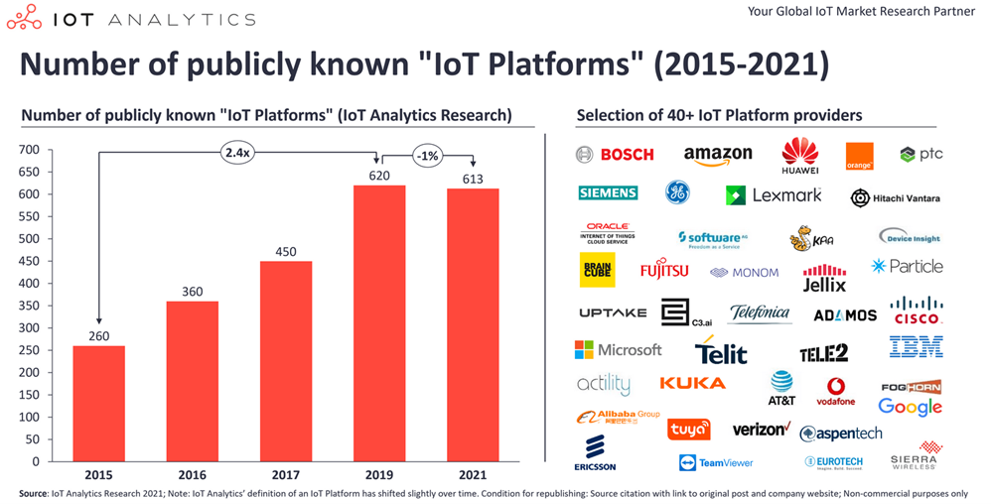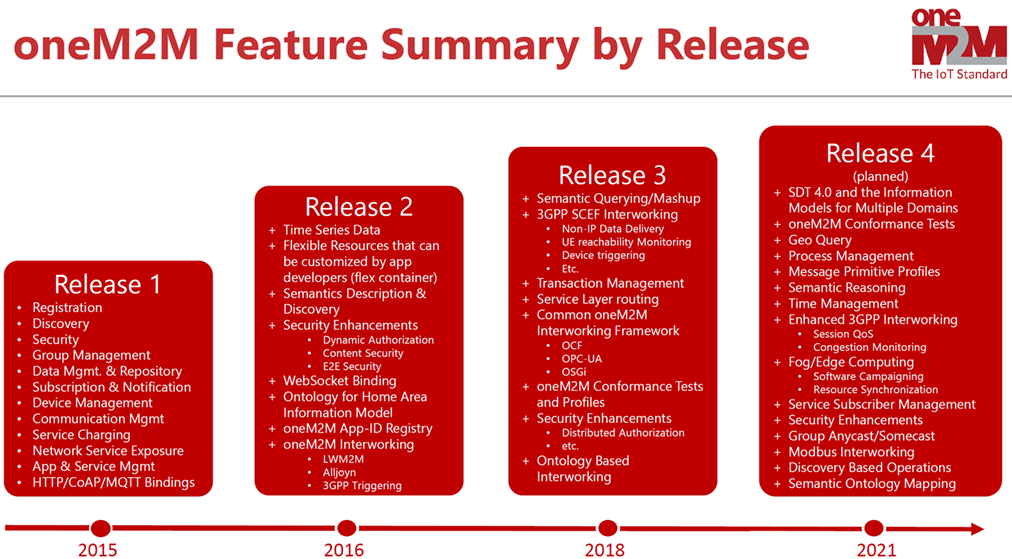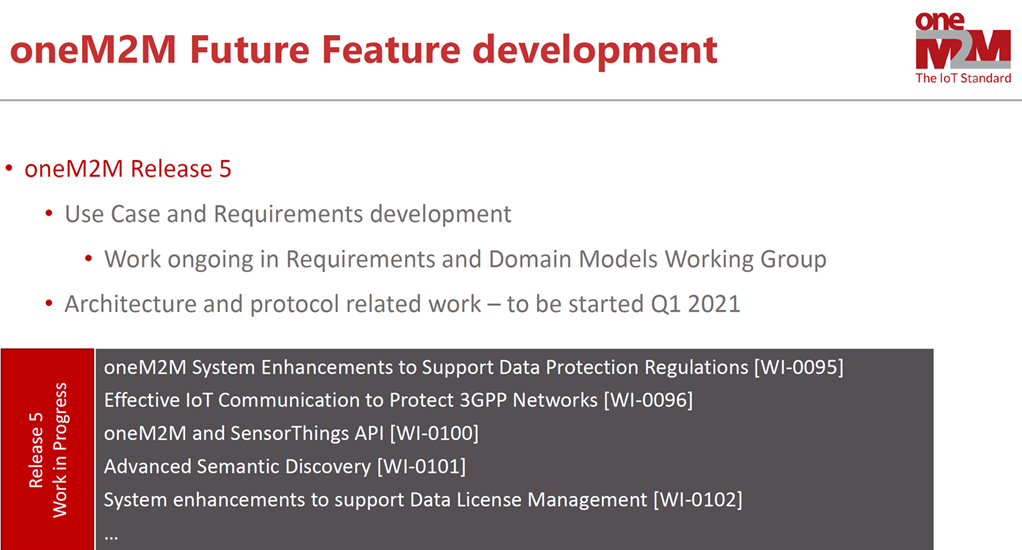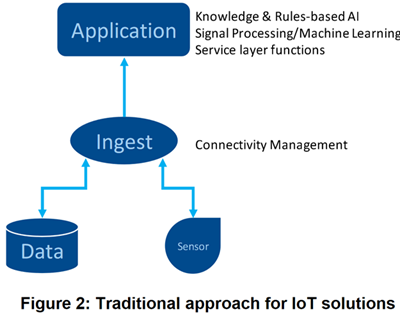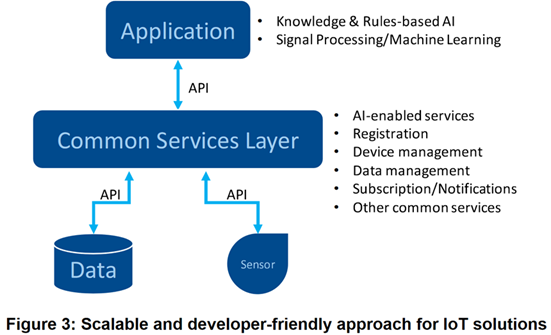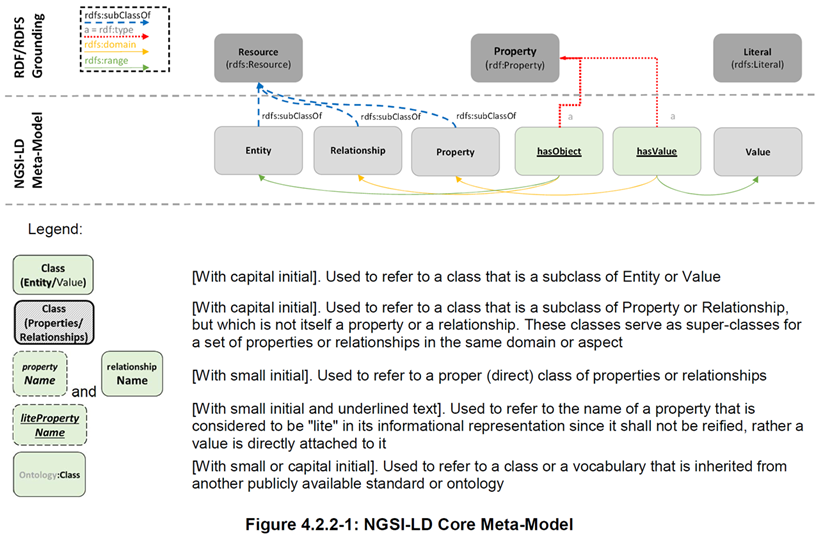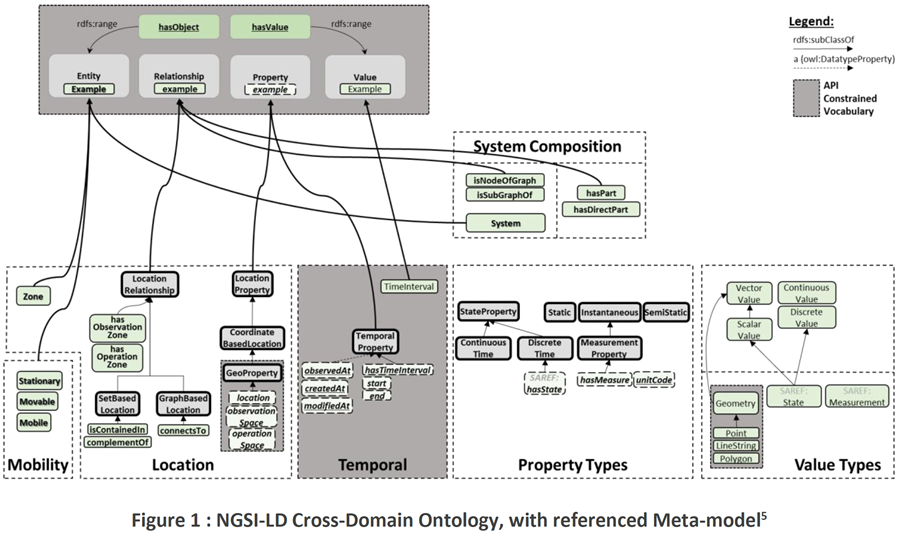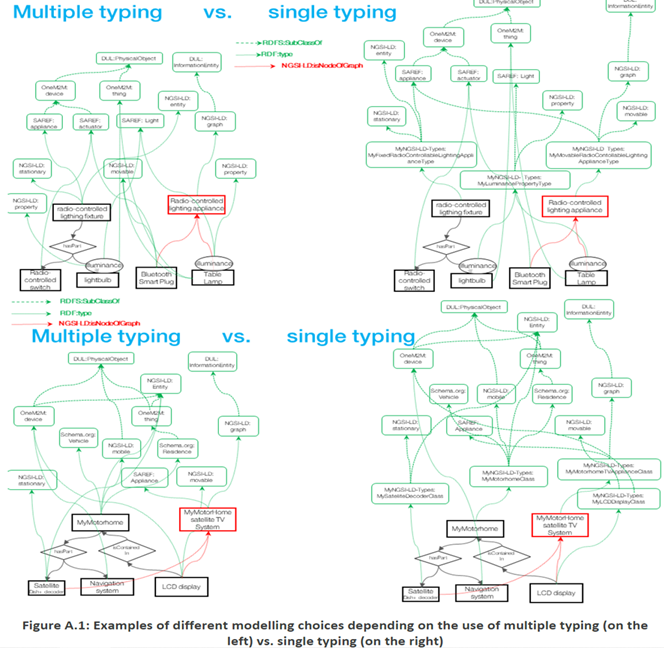oneM2M Overview
The oneM2M Global Organization creates Technical Specifications (TSs) to ensure that Machine-to-Machine (M2M) Communications can effectively operate on a Worldwide scale.
...
Like this SAREF became Smart Applications REFerence Ontology (core SAREF) with its domain mapping extensions.
oneM2M Release Roadmap
oneM2M Layered Architecure Model
...
The flow of Data has an important bearing on Architectural Components for IoT Solutions, that is part of the analysis of the impact of AI on IoT Architectures, in particular the oneM2M Service Layer. The typical focus is on Data that leads to some form of decision being taken and is classified as 'User-Plane' (UP) Data. The basic Model for IoT Solutions begins with sourcing Data from IoT Devices (illustrated in left-hand side of Figure 1 below). This Data then passes through a Signal Processing and Machine Learning (ML) Process to extract key features and to represent them as Knowledge-based Objects. The next stage of processing involves the Application of Rules-based AI in areas related to Reasoning, Decision making, Supervision and Explainable AI.
This workflow illustrates some of the Generic and Commonly used Data Sourcing and AI/ML Capabilities involved in supporting End-to-End (E2E) IoT Solutions. It also shows how AI/ML Capabilities depend on Service Layer Capabilities. An example (illustrated in right-hand side of Fig. 1) is the relationship between a Registration Capability that manages the Identify of a Device and its Value in providing information about the Provenance of Data used in Pattern Recognition or Causal Inferencing Functions. In this example, the act of tracking data provenance depends on a 'Registration' Service Capability. Provenance tracking can improve the quality and dependability of an AI/ML system and occurs in the background to 'User Plane' (UP) activity. In Architectural terms, such background processes and use of Data that improve the Quality of AI/ML Applications occur in what is referred to as the 'Control Plane' (CP).
A traditional approach (illustrated in Fig 2 below) relies on an Application Ingesting and Storing Data for Processing. The SW implementation concentrates AI/ML and Service Layer Capabilities in the Application Layer. This places a burden on Solution Developers to master Application, AI and Service Layer disciplines.
The alternative is a Developer friendly Approach (illustrated in Fig 3 below). This approach provides developers with an Abstraction Layer - i.e. a Common Service Layer - that makes AI and the more usual IoT-enabling Services accessible through a Standardized API. This arrangement means that the IoT Application can rely on notifications from the Common Services Layer to trigger its Functions when notified of changes in IoT Data. It can also draw on a Library of AI-enabled Services provided within the Common Services Layer.
A Three-Tier Frramework to organize the logical aspects of AI in IoT maps AI Applications into a 'User' Plane (UP).
oneM2M and CIM NGSI-LD (Context Information Management Next Generation Service Interface - Linked Data)
...
The NGSI-LD Core @context is publicly available at https://uri.etsi.org/ngsi-ld/v1/ngsi-ld-core-context-v1.3.jsonld and shall contain all the terms as mandated by Annex B.
Using Typing vs. using Relationships or Propertiesin ETSI CIM NGSI-LD
...
To summarize: instead of associating similar properties to different entities that belong to a common category, a class can be defined to associate all those attributes9 implicitly to all the instances that belong to it. In case of modification of a property, there would be one local placeholder to change, the attribute associated with the class, instead of changing the attribute in all the instances explicitly.
Recommendations for NGSI-LD Typing with Multiple Typing
...
